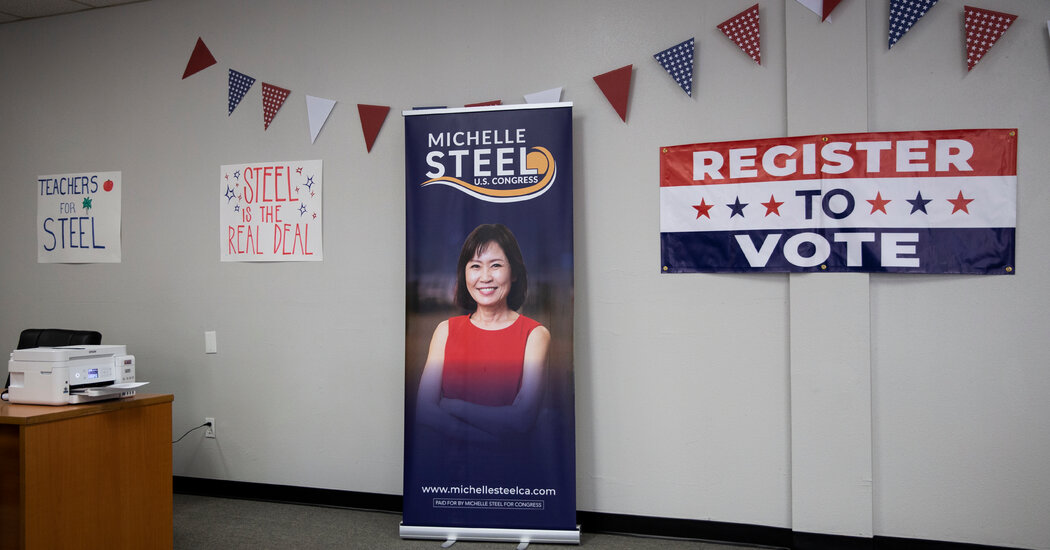SACRAMENTO — In California primaries, Republicans can vote for Democrats. Democrats can vote for Republicans. And in general elections, candidates fro
SACRAMENTO — In California primaries, Republicans can vote for Democrats. Democrats can vote for Republicans. And in general elections, candidates from the same party can end up going head-to-head.
For the past decade, California has departed from traditional American primaries, in which voters from each party pick the candidate who will represent them on a general election ballot. Instead, all the candidates from all the parties are listed on the same primary ballot, and the top two vote-getters face off in the general election regardless of party affiliation.
Also known as “open” or “jungle” primaries, these kinds of elections aim to produce elected officials who are more inclined toward compromise and consensus by encouraging candidates to look beyond the true believers in the bases of their parties, courting moderates and independents.
And California’s system is increasingly being discussed elsewhere as a possible solution to hyperpartisanship.
“The basic logic is not crazy,” said Eric McGhee, a senior fellow at the Public Policy Institute of California, a nonpartisan think tank. “A lot of voters do actually sit between the positions of the two parties.”
But can it help drain extremism from political discourse?
“I think it’s probably the case that it can produce more moderate legislators,” said J. Andrew Sinclair, an assistant professor of government at Claremont McKenna College who has studied the top-two system. “But it’s hard to sort out, and there’s a fairly robust debate about it.”
How does this work in theory?
In a traditional primary system, candidates have incentive to appeal to their party’s base rather than seek crossover votes. Republicans can win by appealing to conservatives who make up the largest share of primary voters or Democrats can win by espousing liberal ideas.
But in California, the top-two system is intended to encourage crossover voting. In a battleground district, a candidate might try to build a coalition of support with base and moderate voters to advance to the general election.
In districts where one party predominates, two candidates from the same party can — and do — emerge from the primary and move on to the general election. In theory, the more centrist candidate can capture crossover votes in the runoff and win.
How has it worked in practice?
It appears to have had at least a modest impact. Christian Grose, a political science professor at the University of Southern California, has found that Asian American and Latino voters are more likely to turn out under the top-two system because a higher share of them are registered as independents. And members of Congress elected under top-two are slightly more moderate than candidates who would most likely have been elected under California’s old system.
In Alaska, a similar “top-four” primary has created some independence from former President Donald J. Trump for Senator Lisa Murkowski, a Republican, by making it harder for him to threaten her with a primary challenger from the right.
But a 2017 research paper by Mr. McGhee and Boris Shor, a political science professor, found that the top-two system had a “modest and somewhat inconsistent effect on representation” in the first few election cycles in California and Washington.
It’s also hard to separate top-two from California’s other reforms that created an independent redistricting commission and changed state legislative term limits, which were enacted around the same time.
And in the past decade, demographic and other changes have intensified California’s one-party rule, such that Democrats now have supermajority control of the Legislature and Republicans have not won statewide since 2006.
“It works, but the size of the effect doesn’t meet the size of the issue,” Mr. McGhee said. “Too many other things are pushing things to the poles, so that you’re tinkering around the margins at best.”
How did California’s primary shift come about?
For years, Californians discussed open primaries as a way to ease political gridlock, but the parties opposed them. In the 1990s, in fact, voters enacted a “blanket” primary that also put all the candidates on a single ballot, but in 2000 the U.S. Supreme Court declared it unconstitutional.
The idea rose again, however, after a wrenching state budget battle toward the end of Arnold Schwarzenegger’s second term as governor in 2009. Slammed by recession and mired in opposite partisan corners, California was operating with a deficit that was bigger than the entire expenditures of most states.
Back when Democrats needed Republican votes to pass a California budget, the deal to approve cuts, taxes and borrowing came down to a single Republican, State Senator Abel Maldonado, a moderate of the sort typically hampered by strong political parties.
One of his demands? Agreement from Democrats to put a top-two primary on the ballot, which would allow all voters to choose from all candidates, regardless of party, and send only two to the general election.
Maldonado may have had good government intentions, but he also had higher aspirations — and had reason to believe the top-two system would better suit his chances down the road.
Neither Democratic nor Republican stalwarts ever forgave him; after a brief appointment as lieutenant governor at the end of the Schwarzenegger administration, his bids for Congress and governor were unsuccessful, and talk of a cabinet appointment in the Trump administration failed to gain traction. But California voters passed the top-two initiative in 2010.
www.nytimes.com
